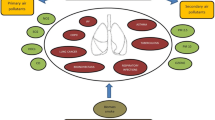Abstract
During the twentieth century, major innovations made by man, in the industrial, agricultural, technological, and transport fields, have led to the appearance of numerous atmospheric, climatic, and biophysical changes. Air pollutants can be defined as a heterogeneous group of substances able to alter the natural chemical composition of air, leading to an impact on human health and the environment. According to recent estimates of the World Health Organization (WHO), more than 90% of European citizens are exposed to annual levels of contaminants (higher than those indicated by WHO in the Europe report of 2 May 2015 [1]), resulting in approximately 600,000 deaths per year. Air pollution may contribute to the development, concern, or exacerbation of some of the most common respiratory diseases, particularly bronchial asthma and chronic obstructive pulmonary disease (COPD). The most vulnerable population groups are represented by children and elderly people suffering from chronic diseases. Respiratory diseases, caused by pollutants, are known to prevail in industrialized areas, and their severity is correlated to time of exposure to pollution and atmospheric pollutants. Numerous studies have been conducted in pulmonology and allergology fields, with the aim of improving levels of treatment and prevention of respiratory diseases caused by pollutants. In this chapter, we will analyze the direct and indirect effects of pollution on the lungs, the major pollutants responsible, the diseases they cause, and possible treatments and prevention strategies (Table 18.1).
Similar content being viewed by others
References
Air quality in Europe—EEA report No. 5/2015.
Andersen ZJ, Hvidberg M, Jensen SS. Chronic obstructive pulmonary disease and long-term exposure to traffic-related air pollution: a cohort study. Am J Respir Crit Care Med. 2011;183(4):455–61.
Forbes LJ, Kapetanakis V, Rudnicka AR, et al. Chronic exposure to outdoor air pollution and lung function in adults. Thorax. 2009;64:657–63.
Kan H, Heiss G, Rose KM, Whitsel E, et al. Traffic exposure and lung function in adults: the atherosclerosis risk in communities study. Thorax. 2007;62:873–9.
Boogaard H, Fischer PH, Janssen NA, et al. Respiratory effects of a reduction in outdoor air pollution concentrations. Epidemiology. 2013;24:753–61.
Cobrun RF, Foster RE, Kane PB. Comparison of the physiopatological variables that determinate carboxyhemoglobin concentration in man. J Clin Invest. 1965;44(11):1899–910.
Annesi-Maesano I, Dab W. Air pollution and the lung: epidemiological approach. Med Sci (Paris). 2006;22(6–7):589–94.
Sierra-Vargas MP, Teran LM. Air pollution: impact and prevention. Respirology. 2012;17(7):1031–8.
Author information
Authors and Affiliations
Corresponding author
Editor information
Editors and Affiliations
Rights and permissions
Copyright information
© 2018 Springer International Publishing AG
About this chapter
Cite this chapter
Cipolla, M., Sorgenti, M., Gentile, C., Bishara, M.M. (2018). Air Pollution and Lung Diseases. In: Capello, F., Gaddi, A. (eds) Clinical Handbook of Air Pollution-Related Diseases. Springer, Cham. https://doi.org/10.1007/978-3-319-62731-1_18
Download citation
DOI: https://doi.org/10.1007/978-3-319-62731-1_18
Published:
Publisher Name: Springer, Cham
Print ISBN: 978-3-319-62730-4
Online ISBN: 978-3-319-62731-1
eBook Packages: MedicineMedicine (R0)




